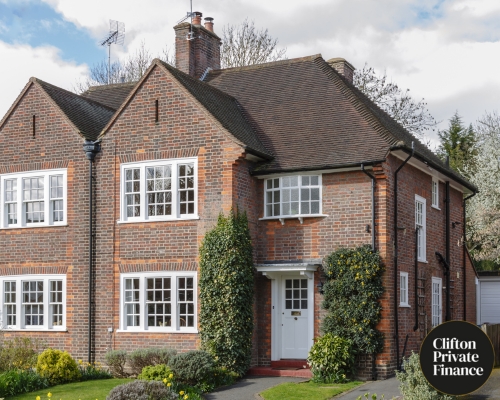Categories
How to Get a Bridging Loan to Pay off A Mortgage Lender

It’s not uncommon for home owners and property investors to find themselves at risk of defaulting on mortgage payments. Forced redundancy, an industry down-turn, a property deal gone sour… suddenly a borrower can find themselves missing payments and being chased by an unhappy lender who has lost confidence in them.
The prospect of repossession can induce a rabbit-in-headlights focus on core business and an unwillingness to engage with the lender. But accessing short-term finance can enable you to pay off your existing lender completely and buy yourself time to get ahead of the situation.
Why would you need a bridging loan?
A bridging loan is a short-term, fast-paced solution that can get you out of a stressful situation. In the current property market it can take time to sell and downsize to suit your changed financial circumstances, and the last thing you want to do is be pressured into a distressed sale.
A bridging loan allows you to pay off your mortgage arrears completely and focus on your exit plan.
The monthly interest payments are added onto the total loan, to be repaid on exit at the end of the loan term.
Who is a bridging loan suitable for?
Bridging finance has enjoyed a reputation for being a risky, high-cost form of short-term finance, chiefly designed for property developers.
But its flexibility, quick turnaround on decisions and increasingly competitive rates now makes it popularly-used borrowing option.
A recent survey of 2,000 borrowers found that 12% had used alternative finance and found it faster and more accessible than high-street lending.
If you have a good loan-to-value (LTV) ratio on the property you are offering as security (at least 30% equity, but sometimes as low as 20%) you will be welcomed as a client for bridging finance if introduced to the right lenders by a mortgage broker.
You will find that short-term lenders are more flexible in the property they will accept as collateral: primary residences, commercial buildings, mixed-use developments, building plots, and property in need of renovation… if you have the required equity in the property and you have detailed an acceptable exit strategy, funding will be available for you.
Even clients with poor credit ratings due to missed mortgage payments (which would make them unacceptable to high-street lenders) can find that the bridging finance focus on assets rather than income can open doors for them.
You may have joined the 1.9m people (in the UK) that welded to your mortgage interest rate fees.
Stuck between trying to pay them off, and trying to be able to make a dent in the payments towards underlying capital.
Finding a plan to pay off a mortgage that is buried under those rates and in the time frame that you have is becoming increasingly difficult, unless you have enough equity to sell and downsize.
A fifth of all outstanding properties in the UK are interest only - a number that has made a steady climb since 2012 where it was only a third of properties. With these rates and a deadline that is catching up with you, it is no wonder to find yourself in what feels like a financial ticking time bomb.
You may not have a plan in place, as is the case with estimated one in 10 UK borrowers, but a bridging loan will give you some financial aid for your outstanding mortgage, and lenders will help you in creating a re-payment plan that works for you.
Check our bridging loan calculator to get an indicative quote
How to apply for a bridging loan
You can apply for a bridging loan independently. But if you’re in a situation where you’re facing defaulting on your mortgage you need alternative finance quickly.
You can waste valuable days and weeks getting your application in order, and applying to lenders who do not consider applicants with your particular criteria.
It does make sense to contact an FCA-regulated broker who can put together your application for you and take it to the most appropriate lenders.
The application process
- Initial application: Your broker approaches a lender to discuss your situation. You will receive an agreement in principle (AIP) telling you the details of your arrangement.
- Credit check: This is a standard part of the screening process. Regardless of whether you have a poor credit score, you may still be eligible for a bridging loan.
- Valuation: The lender will make their independent valuation of your property (you will need to pay for this).
- Agreeing terms: They will offer formal terms for the loan. You will need a solicitor experienced in property law to examine the loan contract for you and highlight any conditions you might want to renegotiate.
- Release of funds: Once all the terms and conditions are agreed and signed, funds can released to your bank within 24 hours
The pros and cons of bridging loans
The advantages of bridging finance:
- Quick to set up.
- Flexible lender criteria, focused on your LTV.
- Highly flexible to early repayment after the first month.
- Interest is calculated daily, so if you repay after one month and five days, you will pay interest on one month and five days (rather than two complete months) and there are no penalty fees.
- Interest, and most of the set-up fees, can be rolled into the total loan to minimise up-front costs.
The drawbacks:
- You need to have a clear exit plan which can be executed within a year (for personal home-owners) or up to two years or longer for commercial investors.
- Bridging loan fees and interest rates can add up to 10% to the amount you are borrowing.
EXAMPLES OF CLIENTS WHO HAVE USED BRIDGING FINANCE TO HELP THEM
Am I still at risk of repossession?
The aim of bridging finance is take the heat out of a situation that has got unmanageable. Having assured finance for an agreed loan term puts you back in control: you create an exit plan that lets you move to the next stage. This may be selling and downsizing your home, or getting renovations completed on a property so that it can be sold.
Bridging lenders aim to make a good return on their high-risk investment, and they will achieve that by you fulfilling the exit plan you’ve proposed. Repossession isn’t good business for them. Lenders will usually keep in touch with you throughout the loan period, getting actively involved in the situation, such as helping you with marketing or selling your property.












